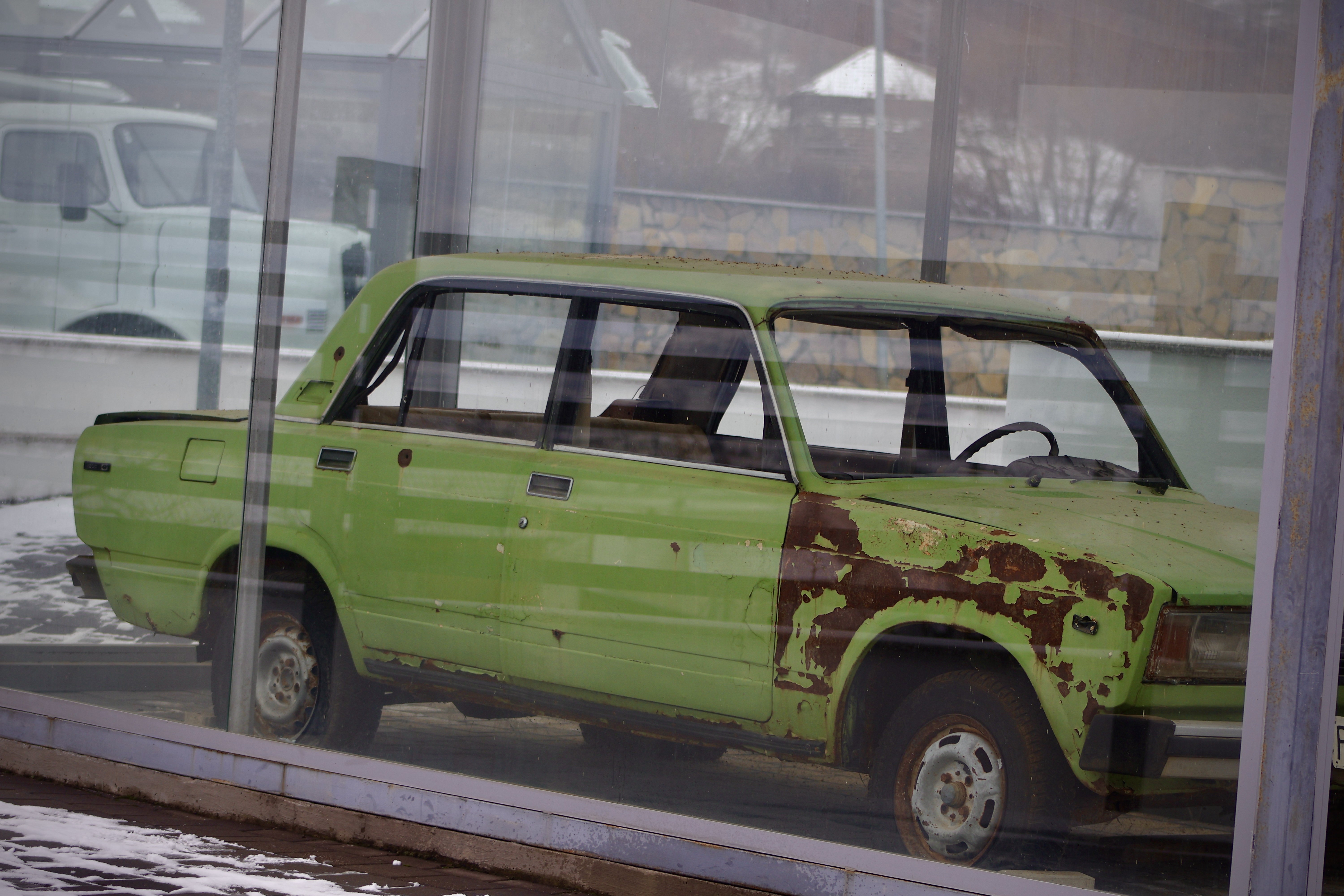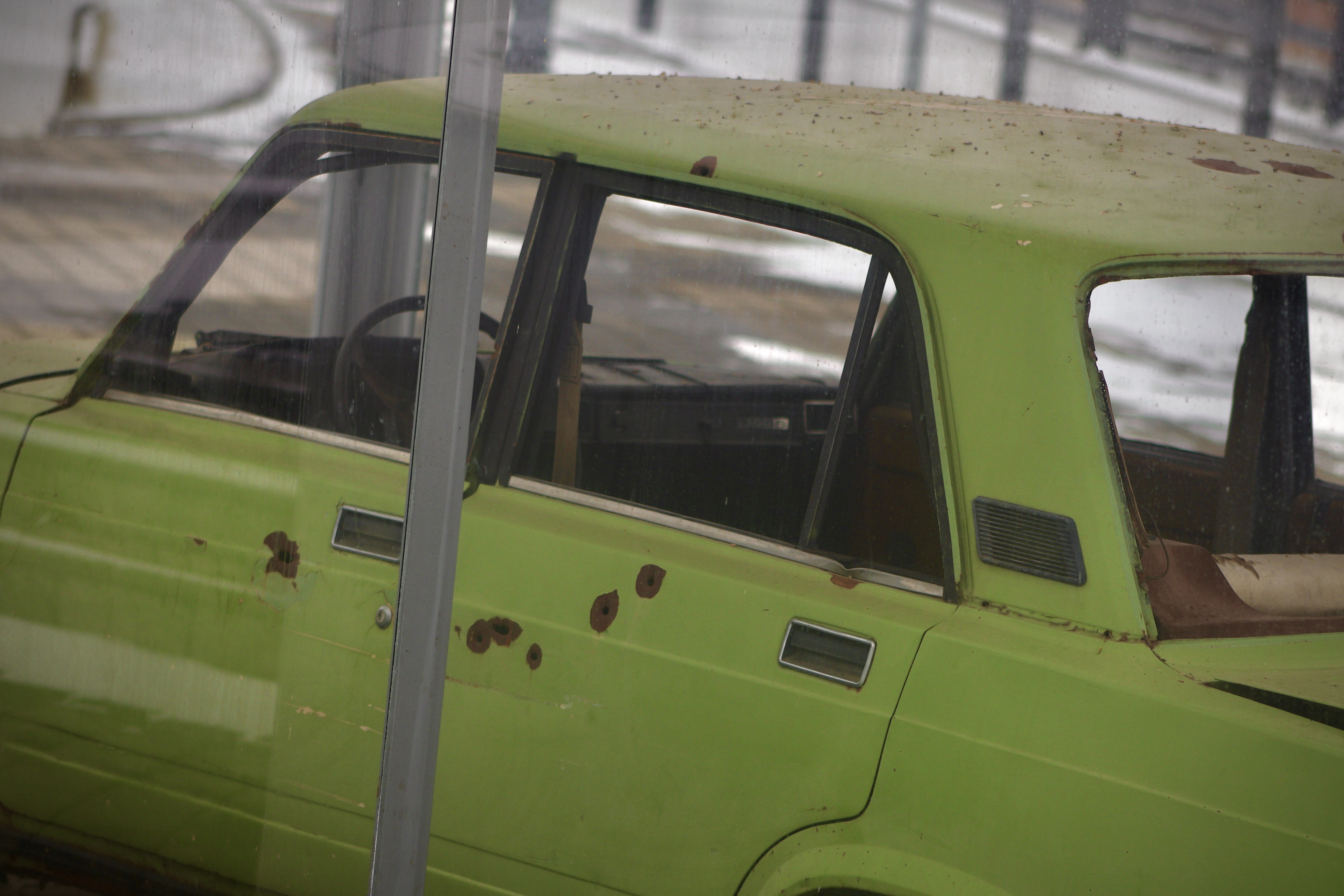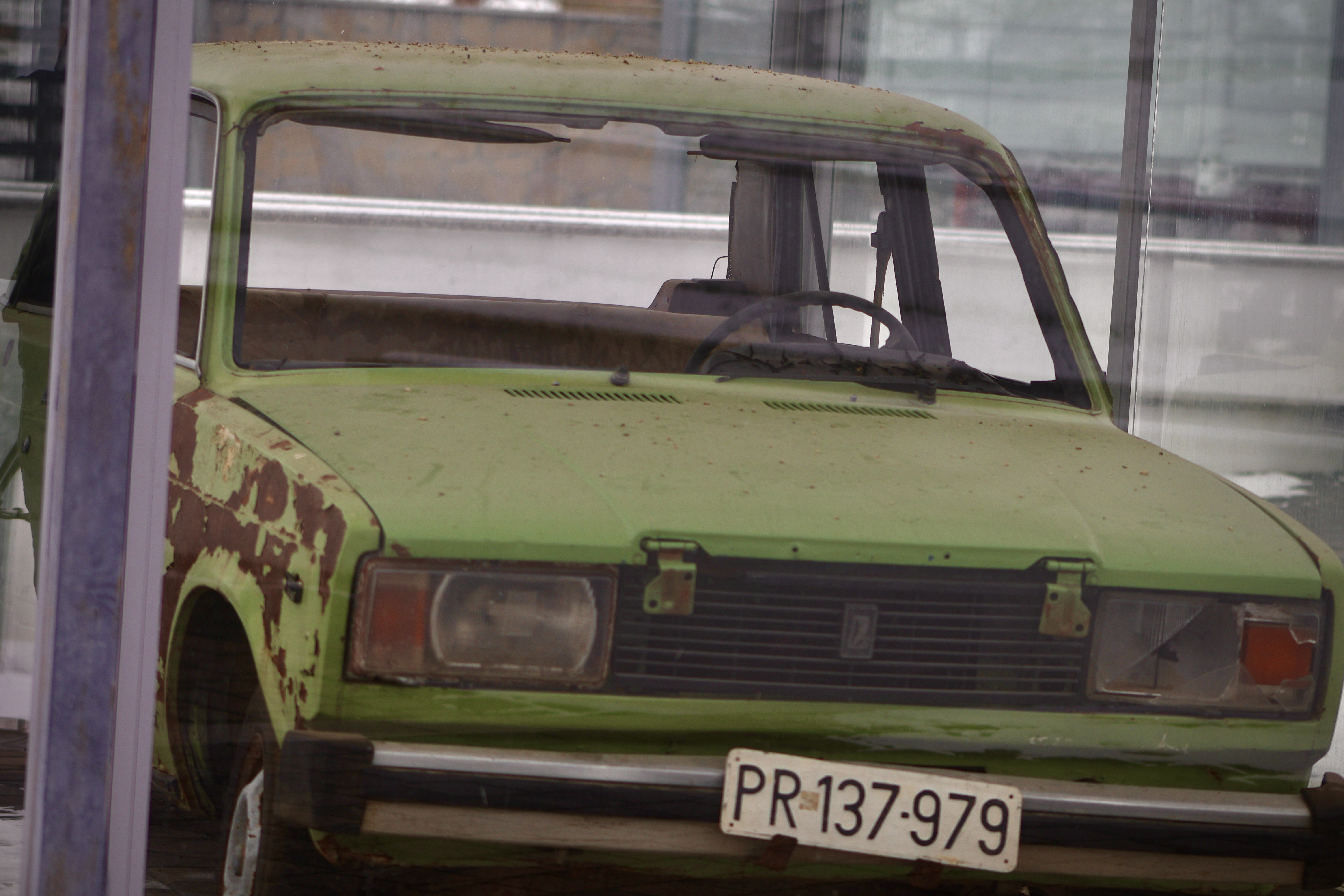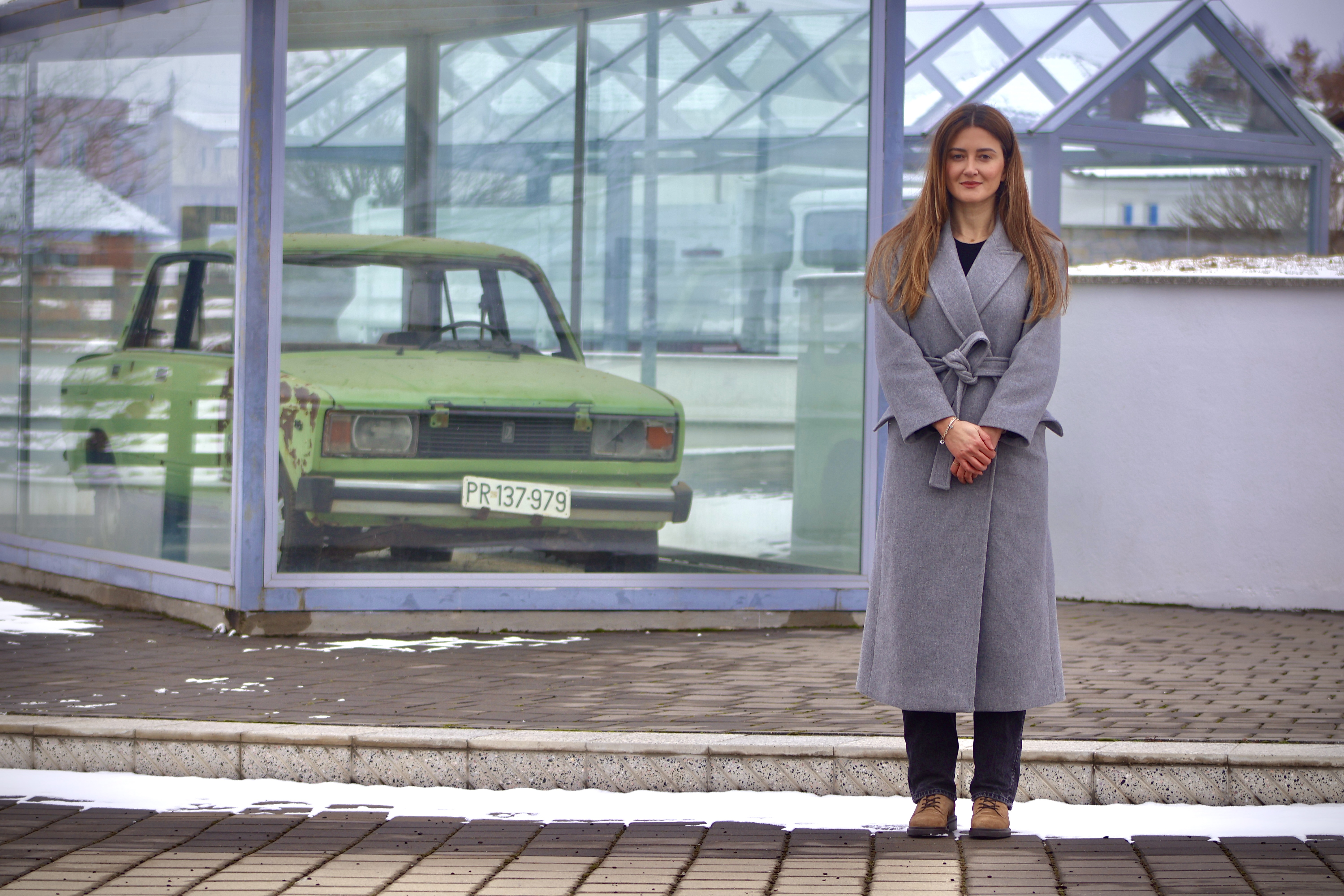Surrounded by display glass, the Lada in which Hakif Zejnullahu was killed in 1997 alongside his two comrades, Zahir Pajaziti and Edmond Hoxha, has become a treasured relic of the Kosovo conflict and a symbol of heroism.
The traces of the volley of bullets have faded the green of the old car with the number plates PR-137-979. The rust holes are just some of the marks left by the bullets that killed three heroes of Kosovo in 1997.
Hakif Zejnullahu and his two wartime comrades, Zahir Pajaziti and Edmond Hoxha, were killed in an ambush organized by Serbian police forces in the small village in Pestovë, Vushtrri, on January 31, 1997.
Although the family members found the three dead bodies right away, they did not find the car until after the end of the war.
Today the car in which they were killed is a relic in the courtyard of the first military base of the Kosovo Liberation Army, KLA, in the house of Hakif Zejullahu in Lladoc, Podujeva.

The Lada in which Hakif Zejnullahu was killed in 1997 alongside his two comrades, Zahir Pajaziti and Edmond Hoxha. Photo: Antigonë Isufi/BIRN
Pajaziti, in his mid-thirties, was the first commander of the KLA, the guerrilla force that led the war of independence against Serbian authorities. Zejnullahu, also in his mid-thirties, was Pajaziti’s nephew, and the deputy commander of the KLA. Hoxha, then 22, had also joined the KLA in mid-1996 and was among the first members.
The history of the Lada and the fate of Hakif Zejnullahu is brought to Prishtina Insight by his niece, Floretë Zejnullahu, now a member of Kosovo Assembly. Although she was only three-and-a-half years old at the time, she recalls the story she heard from her grandfather and father, 26 years later.
“On the day they were killed, my uncle Hakif received an urgent call from Zahir using the means of communication at that time. He [Zahir] had called for an emergency in Prishtina. From Prishtina they then set off in the direction of Vushtrri, and in the village of Pestovë they encountered an ambush organized by Serbian forces,” Zejnullahu said.

The Lada in which Hakif Zejnullahu was killed in 1997 alongside his two comrades, Zahir Pajaziti and Edmond Hoxha. Photo: Antigonë Isufi/BIRN
According to Zejnullahu, a relative of theirs who worked at the hospital in Prishtina first received the news about the death of her fellow villager, who then conveyed the news to an extended family member. The family says they received the news of their death from the extended family member 15 minutes after midnight. He came on the night of January 31 around 00:15 in the morning and asked Hakifi’s father where his sons were, Zejnullahu recalls.
“I’m telling you what my grandfather told me. He said: ‘Where are your sons, Sabit?’ He [the grandfather] told him: ‘I have two here and one, God knows where he is’. He said: ‘The one that you do not know where he is is one of the three who were killed. Now he is in the Prishtina morgue,’” Zejnullahu said.
What the killers’ names were, and the details of how the murder came about are still not known, even after 26 years. But their car has remained as a “witness” to that fateful date.
Until the war ended, the car was nowhere to be found. After the war, someone informed the Zejnullahu family that the Lada was in the te Qafa area in Prishtina. The family found the Lada in a garage that previously belonged to the Secretariat for Internal Affairs.

The Lada in which Hakif Zejnullahu was killed in 1997 alongside his two comrades, Zahir Pajaziti and Edmond Hoxha. Photo: Antigonë Isufi/BIRN
Some parts had been stolen and replaced. The front of the car and the steering wheel have been replaced with new parts. They also found blood stains inside the car, which were no longer that visible.
By now, old age had caught up with the car.
The family enclosed it in a glass shell that stood the test of time for many years. In 2015, the Memorial Complex of the first base of the KLA was founded right in the house of Hakif Zejnullahu, and the old car got a proper glass shell.
“Now more than 23 years have passed since the war and in every corner of the war, we have traces and evidence of the genocide committed by the Serbian regime in Kosovo. We have one of them here, a part of the value of this war in Lladoc,” said Floretë Zejnullahu.
On the other side of the Lada, last year, Hakif Zenjullahu’s truck was placed under glass as well. Unlike the car, which was old and had worn-out tires, the truck was painted.
Hakif’s father had left them a bequest before his death and an amount saved from his pension so that the truck could also be put under the glass, just like the car.
“Both the car and the truck were owned by my uncle Hakif… In addition to the car, he also used the truck at that time when they wanted to escape the tracks and not be seen every time with the same car,” said his niece.
Zejnullahu says that they have many visitors, especially in the summer. With the completion of the museum house, they will place other things there, for which even more visitors from abroad are waiting.

Floretë Zejnullahu. Photo: Antigonë Isufi/BIRN
At the end of last year, a photo of the Lada was selected as one of the best photos by National Geographic magazine
“It was a feeling of pride not only for us as a family but for the entire Albanian people. The photojournalists of this American magazine had taken somewhere around 2.3 million photos all over the world, and with the selection of two best photos from Kosovo, among the 49 best photos in the world, it was a very good feeling for us and a sense of pride,” she said.
Floreta said she received the request from National Geographic to take photos at the end of 2021, with the idea of photographing a girl in politics who was a descendant of a family of heroes.
“Until that time and every time he [her uncle Hakifi] stayed at home I was in his lap, I grew up with him, with his love and I am happy and very proud to be the niece of the hero,” the 29-year-old, who at that time was only three-and-a-half, said, excitedly.
Zahir Pajaziti was named a national hero by Kosovo’s President, Farmir Sejdiu in 2008. Zejnullahu and Hoxha were decorated national heroes by President Atifete Jahjaga during her mandate.
Zejnullahu says the mission of the car and those who drove it was the freedom and independence of Kosovo, but adds that their mission cannot be considered fulfilled as long as their comrades-in-arms face trial in the Hague.





